Street Fighter Week: The evolution of Ken and Ryu
Two of gaming's most iconic fighters are dissected, game by game
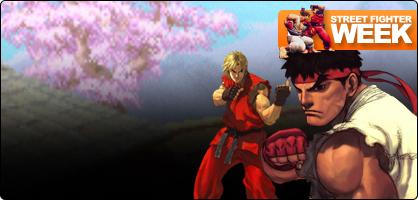
Table of Contents
Street Fighter|Street Fighter II|Alpha series|Street Fighter III|EX series|SF: The Movie and Gem Fighter|Marvel vs. Capcom series|SNK vs. Capcom series|Misc. games|Sprite comparison|SSFIITHDR and Street Fighter IV|Comics, films, and more
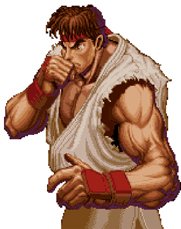
Ken and Ryu are cultural icons. Legends. Even most non-gamers, assuming they have at least a cursory knowledge of '90s pop culture, can recognize them.
Ten years after Street Fighter III, Street Fighter IV is about to cement the formidable duo into the collective consciousness of a new generation. In celebration, we're taking a look at how they became legends in the first place, one game at a time.
Check back every day this week for more Street Fighter retrospectives - don't miss Chun-Li, Blanka, Cammy, new Street Fighter IV footage, and more!
Street Fighter - 1987
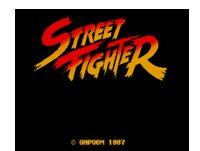
Street Fighter, created by two fellows who would later move on to SNK, laid the foundation for a revolution in fighting games. The game itself, however, is merely a relic. Technological limitations prevented it from ever catching on, making it "that one game... before Street Fighter II." Nevertheless, our story of two aspiring warriors begins here.
As the story goes, Ken and Ryu are students of Shotokan Karate. Ken fights in the US martial arts tournament, whileRyu enters the"World Warrior Tournament." Ryu wins, branding Sagat with his signature scar in the process (but only after succumbing to "Satsui no Hadou" - more on that later). Ryu is born as the archetypal "wandering warrior," and his never ending quest for new battles begins.
Sign up to the GamesRadar+ Newsletter
Weekly digests, tales from the communities you love, and more
The only playable characters in the game are Ken and Ryu. There is no character selection screen. In versus, the first player is automatically Ryu, and the second Ken.
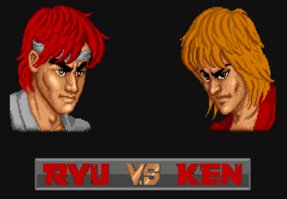
Ryu makes his debut with oddly striking red hair, a white headband, black belt, red shoes and apparently a variety of nuts in his cheek to consume later. Ken appears roughly the same (in terms of physical characteristics, not style) in Street Fighter as he does in later games - a red uniform and hair made of pasta.
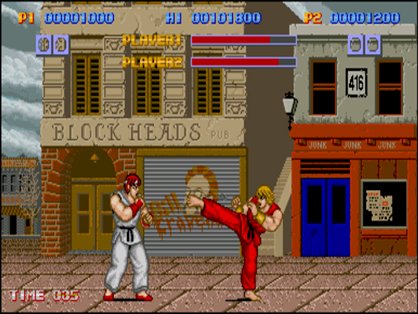
Above: We'd like to spend an evening at Block Heads Pub, wouldn't you?
The sprites are obviously far simpler in the original than in any of its successors. One notable aspect of the characters is that their knees and chests are roughly forward-facing (facing the other character), something we won't fully see again in the series.
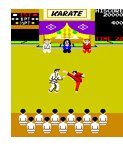
It has been asserted that the pairs' uniform colors are a direct reference toKarate Champ (right), an early arcade game and one of the first ever side-view fighting games.
Also notable is that non-Japanese versions of the arcade game contained English dubbed character voices, something that Capcom thankfully did not repeat. If it had, "Hadouken" may never have become the iconic battle cry that it did outside of Japan.
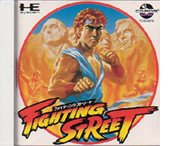
Trivia: In 1988 a port of the original Street Fighter arcade game was released on the TurboGrafx-CD under the name "Fighting Street." The developer, Alfa System, is still making games in Japan, the most recent being Tales of Innocence for the DS.



